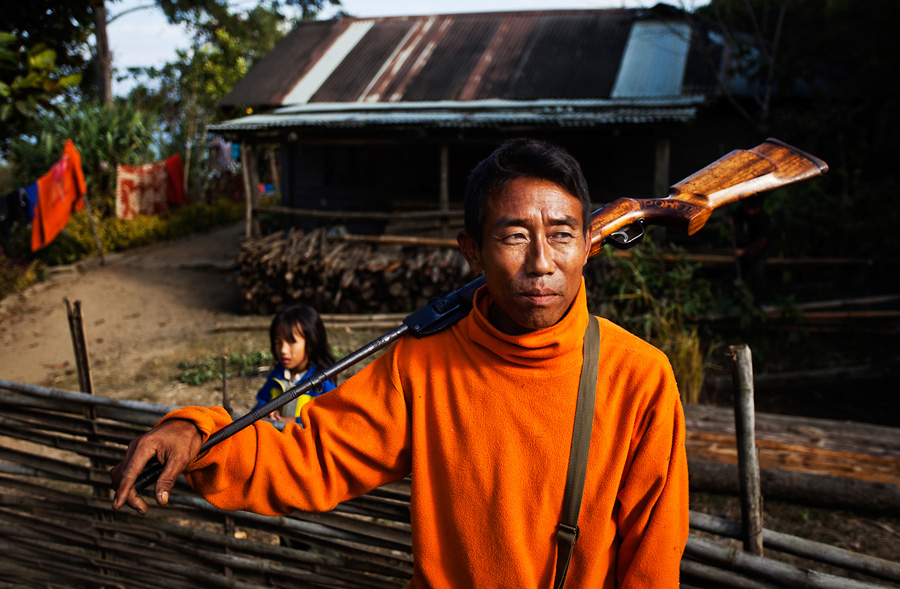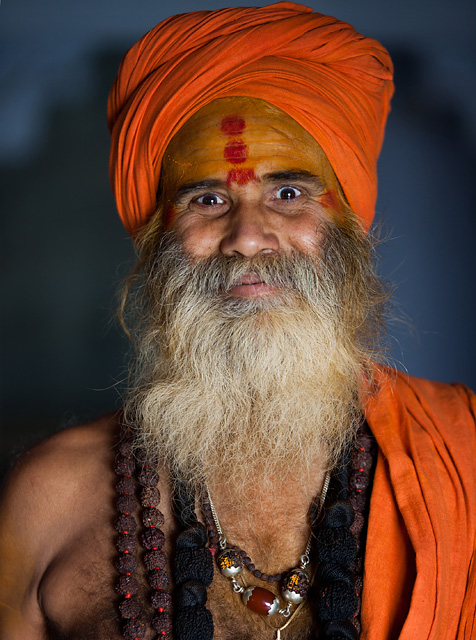I travelled extensively in North-East India last December, exploring many remote and rural locations in Assam, Nagaland and Meghalaya. There were many things common in photographing people across the three states – they were all very friendly, approachable and also very shy. One experience that stood out among all these was a short time we spent in a small village of Rangma Nagas on our way to Kohima.
We were on a long drive from Mokokchung—a small town in the northern part of Nagaland—to Kohima on a pleasant sunny afternoon. We stopped for a short break nearly an hour before reaching Kohima, in a small village inhabited by Rengma Naga people. At the road leading off the main road to the village, we met a man holding a rifle who saw us and stopped by for a conversation. He was out hunting birds, and did not seem to have any catch that day.

A few minutes into our introductions, he invited us into the village and called us home for a cup of tea. It was a pleasant surprise to be invited home by a complete stranger and we were more than glad to tag along. At his small but beautiful dwelling, we were welcome by the lady of the house who quickly got around to lighting the stove and making some black tea. We did not even speak each other’s language, except one of us who spoke a bit of Nagamese and interfaced us.
This article was written for Terrascape, a travel magazine where I write a monthly column on photography.
One of my long standing wish was to photograph the mendicants in Varanasi. I have been to Varanasi many times in the past, but in all these years, I was apprehensive to approach the sadhus with a camera. I had heard about short-tempered nature of many and was unsure about reaching out to them. I did not wish to photograph people from a distance either. As much as possible, I prefer to make conversations, know about the people I am photographing and keep them comfortable during the shoot. During the last visit, I decided to put my uneasiness aside and make an effort to approach them.

Instead of trying to connect with any mendicant I bump into on the river-front, I planned to meet them at their own residences. Obviously, the first step to doing this was asking permissions. I wasn’t very hopeful with being let in, but decided to try out anyway. To my surprise, the Guruji of one of the largest and well-known river-facing residence of the mendicants gladly consented to our request. Even better, the resident mendicants were happy to oblige to the camera.
I am part of a private community of photography-enthusiasts consisting of people who have travelled with us on photography tours. It is usually abuzz with some interesting images, events or topics of discussion related to photography. In the last week the focus of discussion was on making Black and White images, and the subject of some B&W experiments were images from a recent photography trip to Varanasi. I raised a few thoughts in the discussion, and thought it is worth sharing those points here.

I see a lot of considerations that would have go into making an image BW. Some of them here, according to me –
1. If the colour brings life to an image–it does to many images–it is perhaps best left with colour. Images of shining earthen lamps that create a warm glow, for example..
2. If the colour is a distraction–it often can be in intense portraits and many other situations–perhaps it is best to get rid of it.
3. In many occasions, colour images loose the shine in high-contrast or challenging lighting situations. But as luck would have it, these are situations that work very well for BW images.
4. Making BW is not just desaturating. It requires very careful consideration of available tonalities, colour channels and contrast and subsequently identifying and enhancing the subject/story. A BW image can be really brought to life with good quality processing. And this is the reason why most professionals during BW film days used to develop their own images, to have full control over final results.
And most importantly, it is worth planning your shoot with the end in mind (that is, final processed BW/colour image). This is something that even Ansel Adams had proposed strongly (in shooting BW film).


